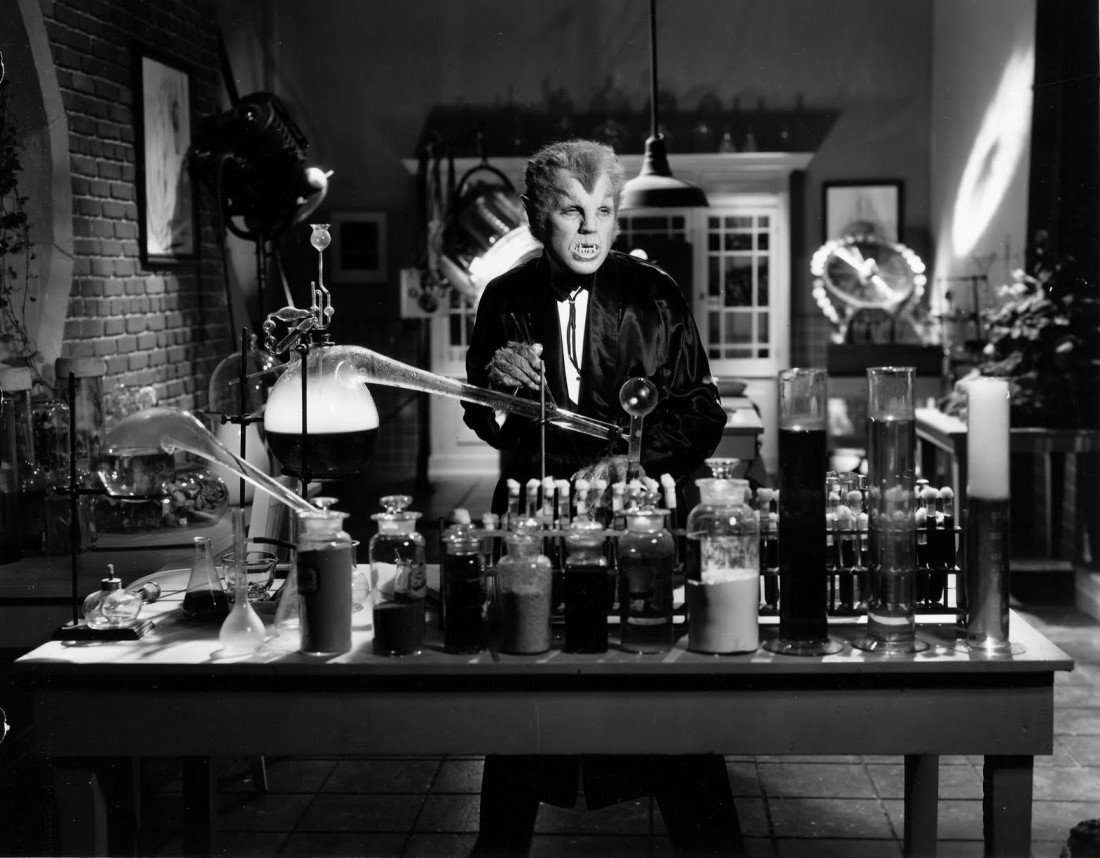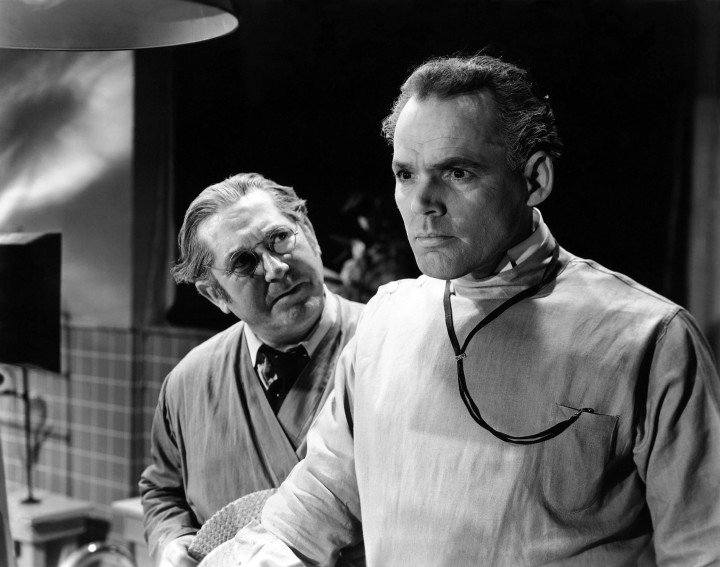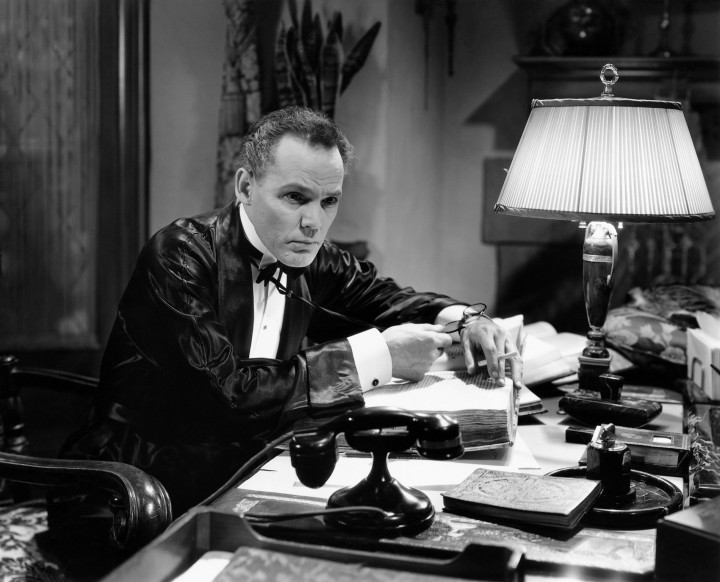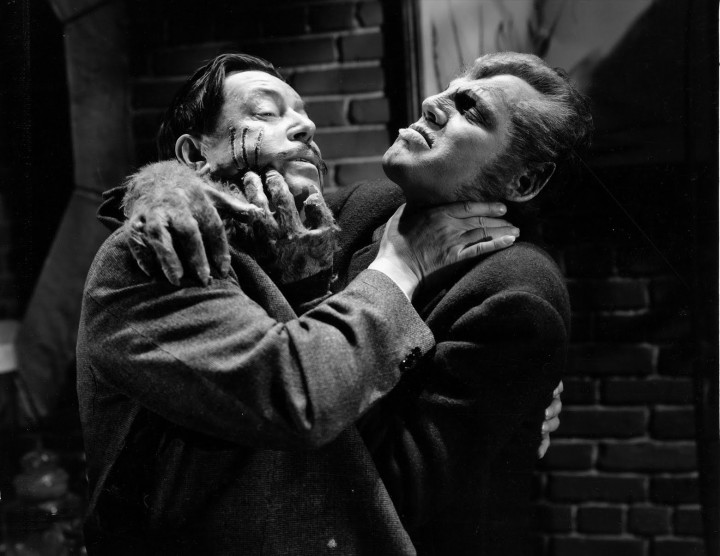Werewolf of London is apt to startle viewers coming to it with the entrenched lycanthropy business of The Wolf Man and its progeny. For starters, there’s no blather about silver bullets or really any sort of mystical mumbo-jumbo. Screenwriter John Colton has taken a more scientific — or maybe pseudo-scientific — approach to the concept, presenting it as more of an affliction. Yes, it’s still transmitted by “the bite of another werewolf,” but the mythology largely ends there. The film actually boasts two werewolves — both of whom are men of science and who meet (“but only for a moment — in the dark”) in scientific pursuit of a rare flower, the marifasa lumino lupino, in Tibet. Dr. Wilfrid Glendon (Henry Hull) is in search of it as a botanist. The other, Dr. Yogami (Warner Oland in his penultimate appearance as anyone other than Charlie Chan), has more personal reasons — the flower is an antidote for “werewolfery.” He, of course, is the werewolf who infects Glendon.
The biggest single difference in a Werewolf of London vs. The Wolf Man debate lies in the fact that the latter film deals with a man — an overgrown boy really, or possibly the embodiment of the good-natured-but-none-too-bright American abroad — who has blundered into something that he simply can’t comprehend. Werewolf of London deals with a man whose scientific reasoning tells him that what has happened to him simply cannot be happening — even though it is. Glendon, however, is so imprisoned by science, reason and modern life that he’s incapable of understanding it. It is not accidental that director Stuart Walker constantly shoots him through imprisoning bars — either actual ones or symbolic ones like columns, stair railings, wrought-iron balconies, etc.
The prison-bar motif that runs through the film is, in fact, most likely the reason behind the way in which Glendon’s first transformation is handled — with the actor passing bar-like columns and appearing more monstrous with each passing. This scene has often been derided as a cheat to cover the technical limitations of the film, but it’s actually very deliberately done and requires the use of a traveling-matte shot — something not employed for convenience. (There are also other transformations, including one that uses the supposedly secret process of colored makeup and filters seen in Rouben Mamoulian’s Dr. Jekyll and Mr. Hyde (1932), that don’t employ “cheating.”)
There are several ways of reading Werewolf of London. Personally, I tend to believe the film and screenplay to be heavily indebted to the last three novels in John Galsworthy’s Forsyte Chronicles— something I explored in detail in an article in Scarlet Street magazine in the late 1990s. (It’s worth noting that James Whale had filmed the last of the Chronicles in 1934. That may have bearing, but there’s more literary precedent than a reliance on Whale’s film.) However, in that same issue, the late Richard Valley laid out a case that the film can be read with the werewolf representing Glendon’s repressed homosexuality. It’s a good case, too, since it explains Glendon traveling the globe with a young man (of no particular use — a point that is deliberately stressed) and his inability to express emotion to his wife (Valerie Hobson) — and it fits the character of the screenwriter, who was himself gay. Either reading works, as does a combination. Or, since such things make some folks uncomfortable, it can be taken simply as a fine monster movie.
The Thursday Horror Picture Show will screen Werewolf of London Thursday, Feb. 25, at 8 p.m. in Theater Six at The Carolina Asheville, hosted by Xpress movie critics Ken Hanke and Scott Douglas.








Before you comment
The comments section is here to provide a platform for civil dialogue on the issues we face together as a local community. Xpress is committed to offering this platform for all voices, but when the tone of the discussion gets nasty or strays off topic, we believe many people choose not to participate. Xpress editors are determined to moderate comments to ensure a constructive interchange is maintained. All comments judged not to be in keeping with the spirit of civil discourse will be removed and repeat violators will be banned. See here for our terms of service. Thank you for being part of this effort to promote respectful discussion.